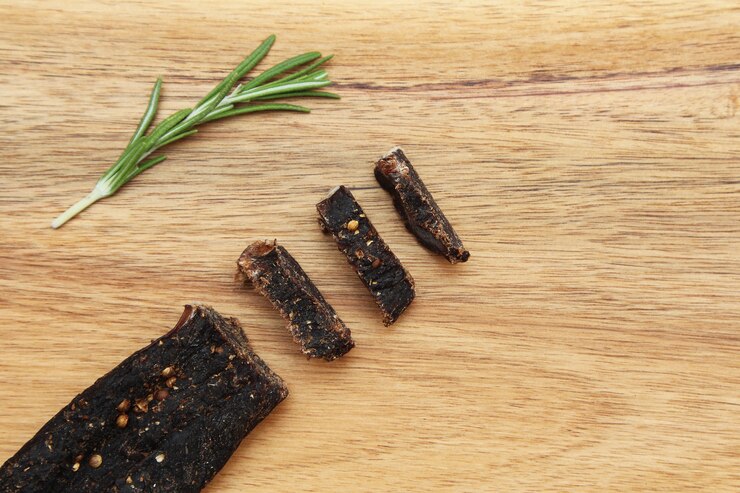South Africa is famous for its beloved cured meat snack, biltong. This delicious and protein-packed treat has become a staple in South African cuisine and has gained popularity worldwide. Biltong is traditionally made by air-drying marinated strips of meat, resulting in a flavorful and tender jerky-like snack. In this article, we will explore the different types of South African biltong jerky and delve into their unique preparation methods.
- Beef Biltong:
Beef biltong is the most common and traditional variety of biltong. It is made from high-quality cuts of beef, such as silverside, topside, or rump. The meat is marinated in a blend of vinegar, salt, coriander, black pepper, and other spices, depending on personal preference. After marinating for a few hours, the meat is air-dried until it reaches the desired texture and flavor. Beef biltong is known for its robust and savory taste. - Game Biltong:
Game biltong offers a unique twist to the traditional beef variety. It is made from lean cuts of game meat, such as venison (commonly from springbok, kudu, or ostrich), which imparts a distinctive and slightly gamey flavor to the biltong. The preparation method for game biltong is similar to beef biltong, with marination and air-drying being key steps. Game biltong is popular among those who enjoy adventurous and wild flavors. - Chicken Biltong:
Chicken biltong is a relatively newer variation of biltong that caters to those seeking a leaner and lighter option. It is made from thinly sliced chicken breasts that are marinated and dried in a similar manner to beef biltong. The result is a tender and flavorful jerky with a milder taste compared to beef or game biltong. Chicken biltong is an excellent alternative for individuals who prefer poultry over red meat. - Fish Biltong:
Fish biltong, also known as fish jerky, offers a delightful alternative to the traditional meat-based biltong. It is made from firm-fleshed fish, such as yellowtail or kingfish, that is sliced, marinated, and air-dried. Fish biltong has a unique texture and flavor profile, with a delicate and slightly briny taste. It is a popular choice for seafood lovers or those looking for a lighter and seafood-inspired snack.
Preparation Methods:
The preparation of biltong follows a similar process regardless of the meat type. Here are the general steps involved:
- Select high-quality meat and trim away excess fat.
- Slice the meat into thin strips, cutting against the grain for a tender texture.
- Prepare a marinade using a combination of vinegar, salt, spices, and optional flavorings like Worcestershire sauce or chili flakes.
- Place the meat strips in the marinade, ensuring they are well coated. Allow the meat to marinate for several hours, or overnight, in the refrigerator.
- After marinating, remove the meat from the marinade and pat it dry with paper towels.
- Hang the meat strips in a well-ventilated area, preferably with low humidity and good airflow, or use a biltong drying box or dehydrator.
- Leave the meat to air-dry until it reaches the desired level of dryness and firmness. This process typically takes several days to a week, depending on the thickness of the strips and environmental conditions.
- Once dried, slice the biltong into thin strips or chunks and enjoy!
South African biltong jerky offers a range of flavors and meat options to suit different tastes and preferences. Whether you indulge in the traditional beef biltong, explore the gamey flavors of game biltong, opt for leaner options like chicken biltong, or venture into the seafood realm with fish biltong, there is a biltong variety to satisfy every palate. The preparation methods may vary slightly, but the essence of biltong remains the same—marinating and air-drying meat to achieve a delicious and long-lasting snack. So, embark on a culinary adventure and savor the diverse flavors of South African biltong jerky.








